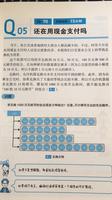我们如何将子查询转换为INNER JOIN?
为了使其理解,我们使用下表中的数据-
mysql> Select * from customers;+-------------+----------+
| Customer_Id | Name |
+-------------+----------+
| 1 | Rahul |
| 2 | Yashpal |
| 3 | Gaurav |
| 4 | Virender |
+-------------+----------+
4 rows in set (0.00 sec)
mysql> Select * from reserve;
+------+------------+
| ID | Day |
+------+------------+
| 1 | 2017-12-30 |
| 2 | 2017-12-28 |
| 2 | 2017-12-25 |
| 1 | 2017-12-24 |
| 3 | 2017-12-26 |
+------+------------+
5 rows in set (0.00 sec)
现在,以下是一个子查询,该查询将查找已预订汽车的所有客户的姓名。
mysql> Select Name from customers WHERE customer_id IN (Select id from reserve);+----------+
| Name |
+----------+
| Rahul |
| Yashpal |
| Gaurav |
+----------+
3 rows in set (0.00 sec)
现在,借助以下步骤,我们可以将上述子查询转换为内部联接-
将子查询中命名的“保留”表移至FROM子句。
WHERE子句将customer_id列与子查询返回的ID进行比较。
因此,将表达式转换为两个表的id列之间的显式直接比较。
mysql> SELECT Name from customers, reserve WHERE customer_id = id;+----------+
| Name |
+----------+
| Rahul |
| Yashpal |
| Yashpal |
| Rahul |
| Gaurav |
+----------+
5 rows in set (0.00 sec)
我们可以看到上面的结果与子查询的结果并不完全相同,因此使用DISTINCT关键字可以得到如下相同的结果:
mysql> SELECT DISTINCT name from customers,reserve WHERE customer_id = id;+----------+
| Name |
+----------+
| Rahul |
| Yashpal |
| Gaurav |
+----------+
3 rows in set (0.03 sec)
以上是 我们如何将子查询转换为INNER JOIN? 的全部内容, 来源链接: utcz.com/z/345462.html







